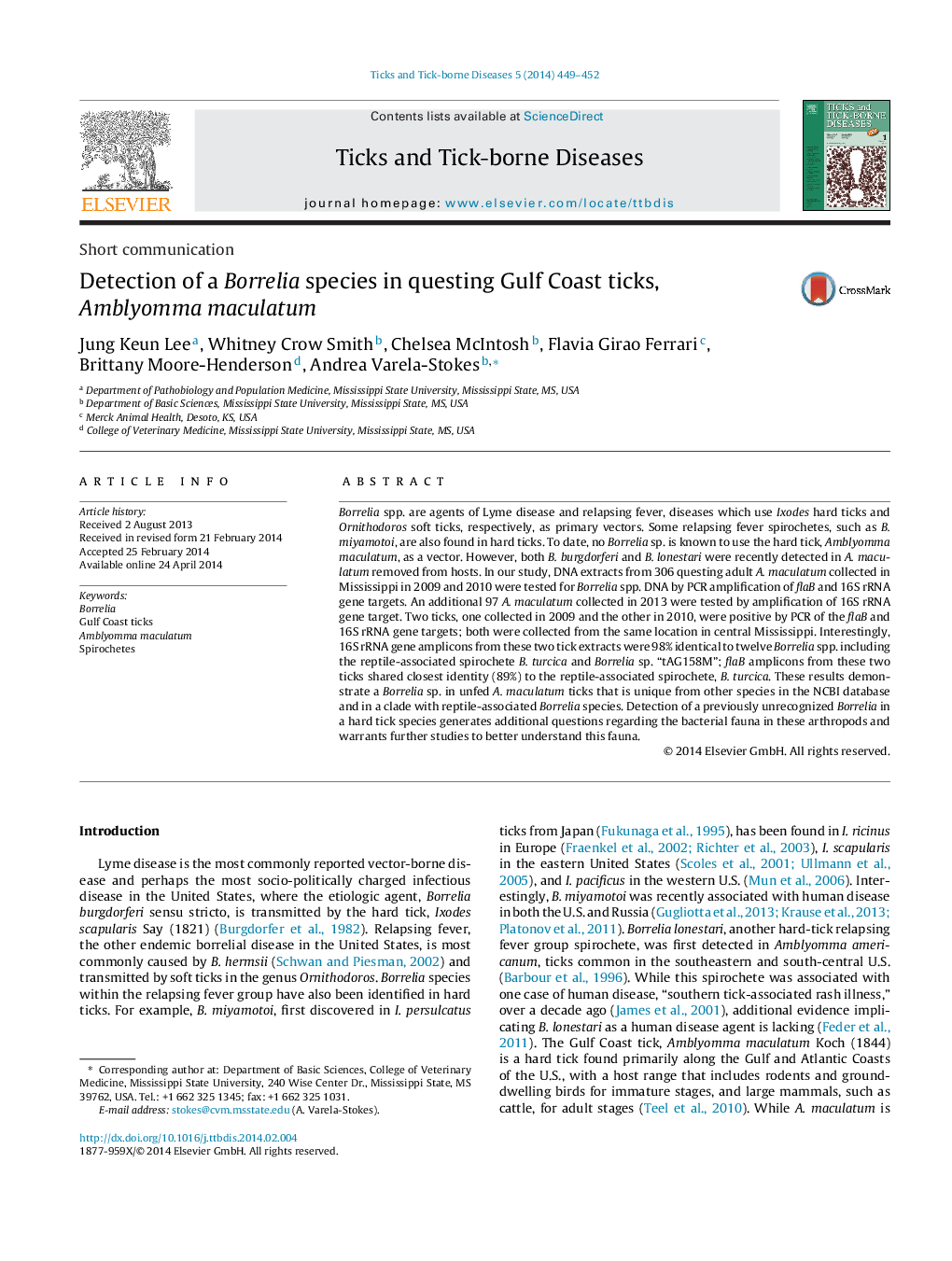| Article ID | Journal | Published Year | Pages | File Type |
|---|---|---|---|---|
| 5807332 | Ticks and Tick-borne Diseases | 2014 | 4 Pages |
Borrelia spp. are agents of Lyme disease and relapsing fever, diseases which use Ixodes hard ticks and Ornithodoros soft ticks, respectively, as primary vectors. Some relapsing fever spirochetes, such as B. miyamotoi, are also found in hard ticks. To date, no Borrelia sp. is known to use the hard tick, Amblyomma maculatum, as a vector. However, both B. burgdorferi and B. lonestari were recently detected in A. maculatum removed from hosts. In our study, DNA extracts from 306 questing adult A. maculatum collected in Mississippi in 2009 and 2010 were tested for Borrelia spp. DNA by PCR amplification of flaB and 16S rRNA gene targets. An additional 97 A. maculatum collected in 2013 were tested by amplification of 16S rRNA gene target. Two ticks, one collected in 2009 and the other in 2010, were positive by PCR of the flaB and 16S rRNA gene targets; both were collected from the same location in central Mississippi. Interestingly, 16S rRNA gene amplicons from these two tick extracts were 98% identical to twelve Borrelia spp. including the reptile-associated spirochete B. turcica and Borrelia sp. “tAG158M”; flaB amplicons from these two ticks shared closest identity (89%) to the reptile-associated spirochete, B. turcica. These results demonstrate a Borrelia sp. in unfed A. maculatum ticks that is unique from other species in the NCBI database and in a clade with reptile-associated Borrelia species. Detection of a previously unrecognized Borrelia in a hard tick species generates additional questions regarding the bacterial fauna in these arthropods and warrants further studies to better understand this fauna.
